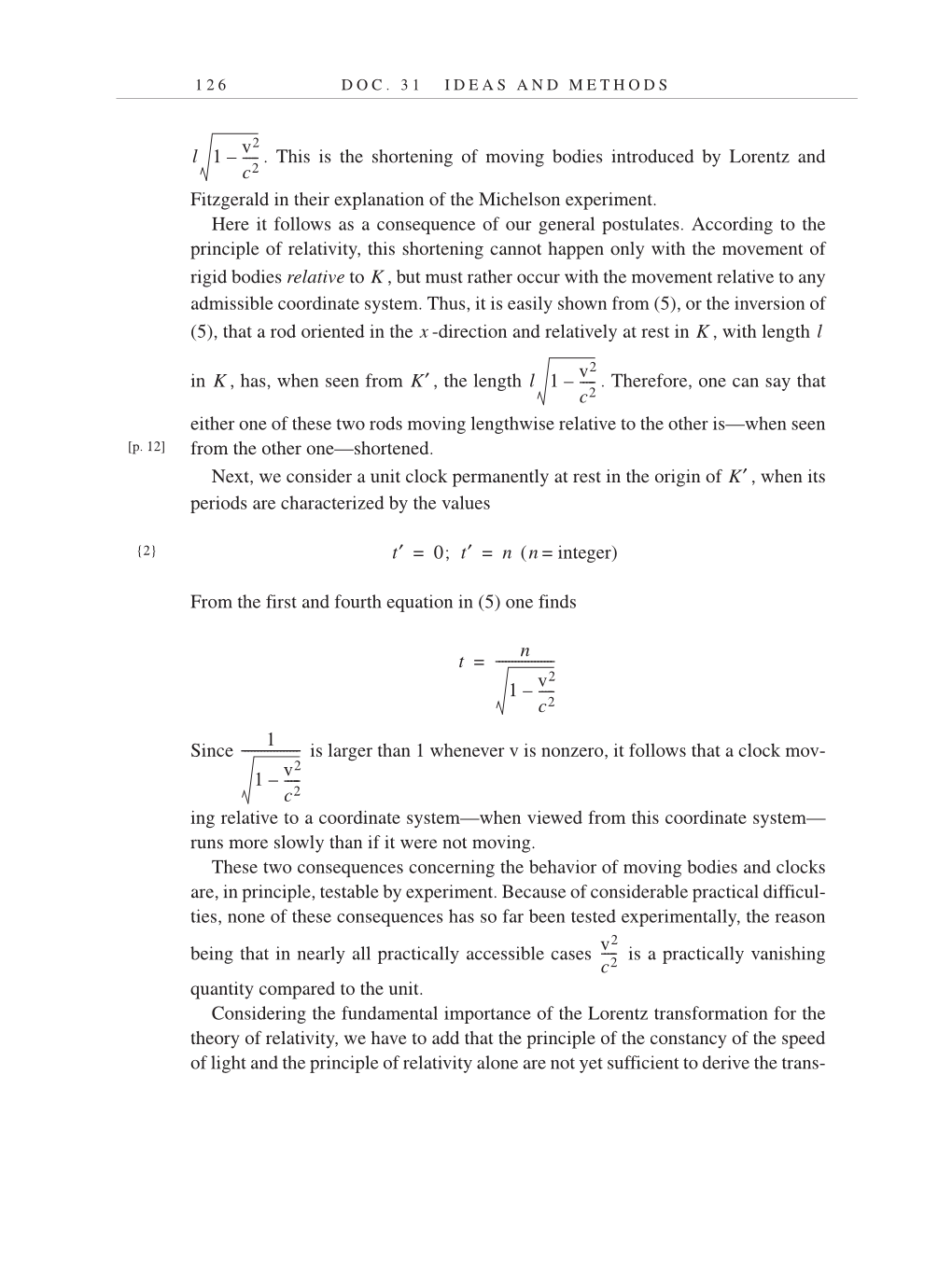1 2 6 D O C . 3 1 I D E A S A N D M E T H O D S
. This is the shortening of moving bodies introduced by Lorentz and
Fitzgerald in their explanation of the Michelson experiment.
Here it follows as a consequence of our general postulates. According to the
principle of relativity, this shortening cannot happen only with the movement of
rigid bodies relative to , but must rather occur with the movement relative to any
admissible coordinate system. Thus, it is easily shown from (5), or the inversion of
(5), that a rod oriented in the -direction and relatively at rest in , with length
in , has, when seen from , the length . Therefore, one can say that
either one of these two rods moving lengthwise relative to the other is—when seen
from the other one—shortened.
Next, we consider a unit clock permanently at rest in the origin of , when its
periods are characterized by the values
( = integer)
From the first and fourth equation in (5) one finds
Since is larger than 1 whenever v is nonzero, it follows that a clock mov-
ing relative to a coordinate system—when viewed from this coordinate system—
runs more slowly than if it were not moving.
These two consequences concerning the behavior of moving bodies and clocks
are, in principle, testable by experiment. Because of considerable practical difficul-
ties, none of these consequences has so far been tested experimentally, the reason
being that in nearly all practically accessible cases is a practically vanishing
quantity compared to the unit.
Considering the fundamental importance of the Lorentz transformation for the
theory of relativity, we have to add that the principle of the constancy of the speed
of light and the principle of relativity alone are not yet sufficient to derive the trans-
l 1
v2
c2
---- - –
K
x K l
K K′ l 1
v2
c2
---- - –
[p. 12]
K′
t′ 0 t′ ; n = = n
{2}
t
1
v2-
c2
---- –
------------------n
=
1
1
v2
c2
----- –
------------------
v2-
c2
----
